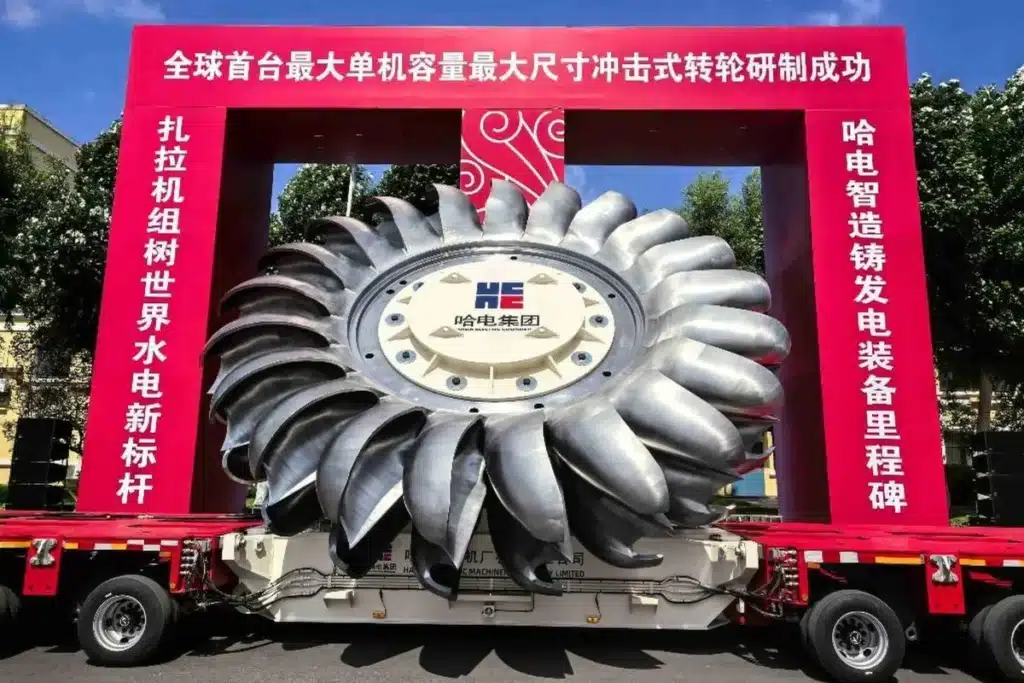
China has launched the installation of a record-setting impulse turbine at the Datang Zala Hydropower Station in the Tibet autonomous region, marking a major step in its push for clean energy and carbon neutrality. The 500-megawatt turbine, developed domestically, holds the title for the largest single-unit capacity of its kind globally, according to SCMP.
Two of these colossal turbines will be installed at the power station, located on the Yuqu River – a tributary of the Nu River that flows through Yunnan province into eastern Myanmar and eventually the Andaman Sea. The turbines are made of martensitic steel, chosen for its exceptional strength, durability and corrosion resistance. Each weighs 80 tonnes, has a diameter of 6.23 metres and features 21 water buckets.
The turbine was developed by Harbin Electric Machinery Company in northeast China and departed its manufacturing facility this week after four years of design and rigorous testing. Described as the «heart» of the hydropower unit, it plays a central role in converting water flow into mechanical energy.
«The bucket-type wheel of the turbine is the core component of the unit. It plays a key role in converting the kinetic energy of the water flow into mechanical energy,» the outlet reported.
Efficiency Gains to Power Millions with Clean Energy
With a vertical drop of 671 metres from the reservoir to the turbine, the station is expected to achieve unprecedented efficiency gains. In January, the newspaper noted that the new turbine design could raise operational efficiency from 91 to 92.6%.
«For a 500-megawatt unit operating 24 hours a day, a 1.6% increase in efficiency would mean generating an additional 190,000 kilowatt-hours of electricity each day,» said Tao Xingming, chief technology officer at Harbin Electric Machinery Company.
The Datang Zala station, which will eventually reach a total installed capacity of one mln kilowatts, is projected to produce around 4 bn kilowatt-hours annually. This output is equivalent to the energy generated from burning 1.3 mln tonnes of standard coal and will prevent an estimated 3.4 mln tonnes of carbon dioxide emissions each year, according to China Datang Corporation, the state-owned company behind the project.
Construction of the main section began in 2023, with operations expected to commence in 2028. The project remains on schedule, according to the State-owned Assets Supervision and Administration Commission of the State Council.
This development comes as part of China’s wider strategy to meet its carbon neutrality goals by 2060. Since 2020, the country has accelerated dam construction and invested heavily in hydropower and energy storage solutions. It remains the global leader in hydropower expansion, accounting for the majority of Asia’s newly added capacity in 2024.
According to the International Hydropower Association, China has over 200 gigawatts of pumped storage hydropower either under construction or approved. The country is expected to surpass its 2030 target of 120 gigawatts and may reach 130 gigawatts before the decade’s end.
Pumped storage hydropower systems, which move water between upper and lower reservoirs to store and generate electricity as needed, are a key component of China’s energy transition and grid stability strategy.













